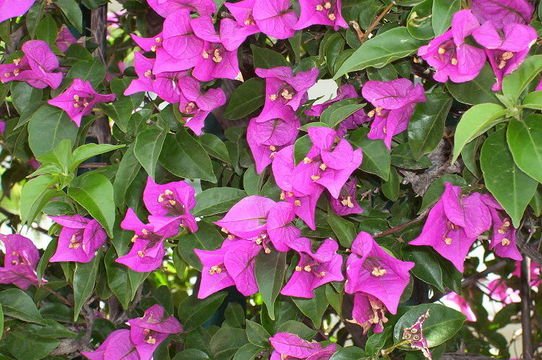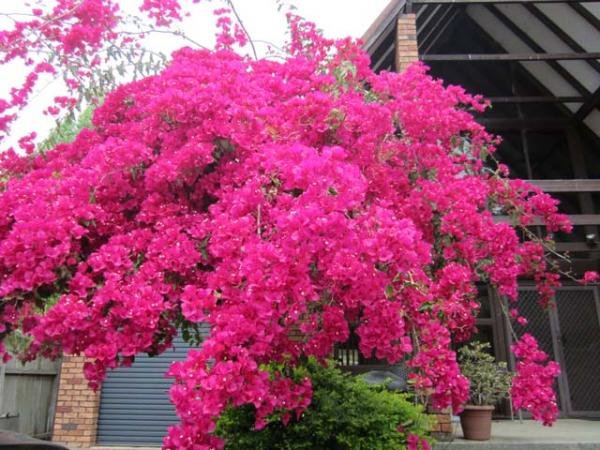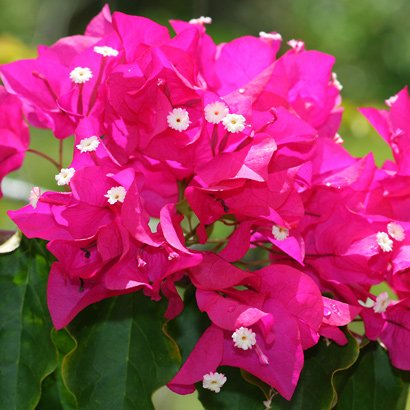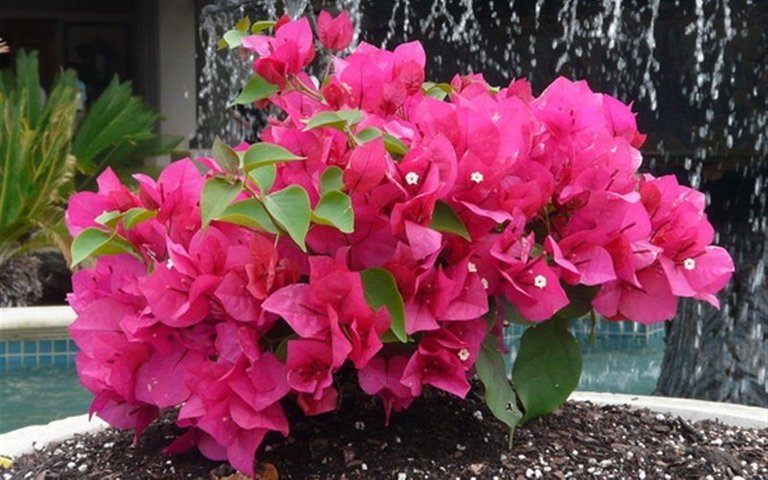
Evolution
Bougainvillea spectabilis is in the family Nyctaginaceae, in the order Caryophyllales. Closely related genera include Belemia and Phaeoptilum. Bougainvillea and Belemia are in the Bougainvilleeae tribe, while Phaeoptilum is in the Phaeoptilinae subtribe (Douglas and Manos 2007). Due to natural hybridization among species, there are 4 to 18 species recognized.

Bougainvillea spectabilis grows as a shrub or thorny, woody vine reaching upwards of 12 meters tall and 7 meters wide. The leaves are simple and alternate, oval in shape, tapering to a point. Leaf size ranges from 4-13 cm long and 2-6 cm wide. The hermaphroditic flowers are small, tubular and white, typically in clusters of three, surrounded by three papery bracts. These bracts vary in color from magenta and purple to orange, white and yellow. The plant is evergreen where rainfall occurs all year, and deciduous where a dry season occurs.

Bougainvillea spectabilis can be found growing in its native range along the Atlantic coast of Brazil (GBIF 2012), although cultivation has spread the plant throughout tropical and subtropical regions of the world. Various Lepidoptera frequent the plant for its nectar, and thus provide pollination services (Wikipedia contributors 2012). When growing as a vine, bougainvillea uses its thorns to cling to and climb up trees.

content sourcesource